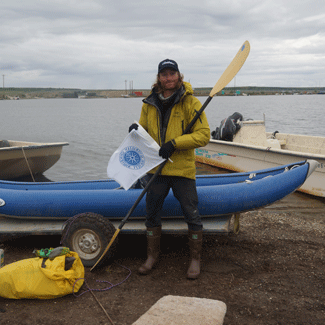Brooks Range traverse

AGS-SPONSORED ADVENTURER JOHN Cantor has successfully traversed the Brooks Range, which stretches for more than 1000km between Alaska and Canada. It is considered to be among the toughest expeditions in the world, and he is the first Australian to complete the trip solo.
“One of the reasons the Brooks Range traverse is considered one of the toughest, is that the start point is the furthest point from civilisation [of any traverse] and you can see down the valleys for miles,” John says.
“The line of sight is really good, but seeing the end point constantly can be a really confronting experience.”
Only four other people are known to have trekked the range solo. It sits deep inside the Arctic Circle, spanning Alaska from east to west, and briefly crosses into Canada’s Yukon Territory.
John first learnt about the Brooks Range in 2006, when he read an article about the Alaskan adventurer Keith Nyitray doing a solo traverse with his wolf-dog, Smoke. Inspired by Keith, John was determined to also complete the expedition solo. “When I set myself this challenge I’d never used a compass or read a topographic map. I’d never even slept in a tent. I really was starting from scratch,” he says.

John Cantor displays the Australian Geographic Society flag.
After three unsuccessful attempts, John was able to overcome injury, illness and personal doubts to complete what he expected to be an 80-day expedition in a little over a month. This allowed him to smash the record for the fastest traverse.
“I didn’t truly believe that I was going to make it that far,” he says. “Even half a day’s paddle from the end I still didn’t know if I was going to make it.”
During the journey John crossed only one road and passed just two small Native American villages. His route involved 1000km of hiking and 600km of paddling an inflatable kayak down the Noatak River, but it wasn’t just about the distance.
“You just don’t have any idea of the sheer scale of the Brooks Range until you’re out there; it was a huge psychological challenge,” he says.
“There aren’t many places on Earth that have that isolation.”
John plans to tackle the ranges again, this time in winter.
RELATED ARTICLES




